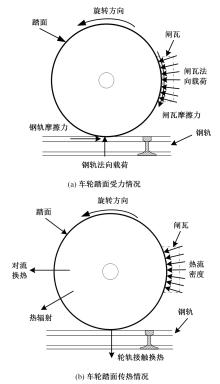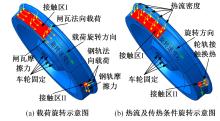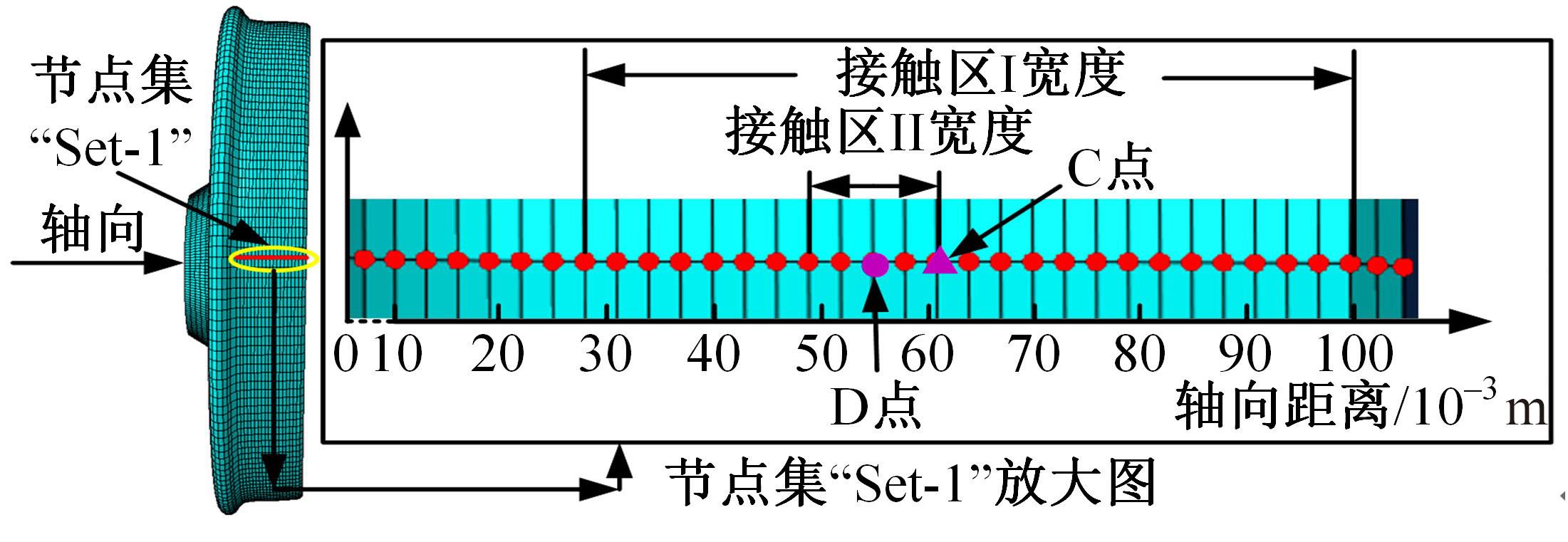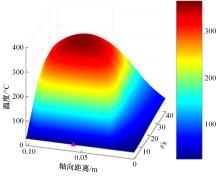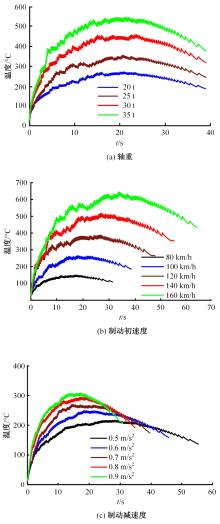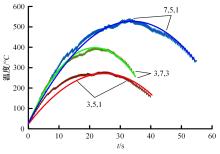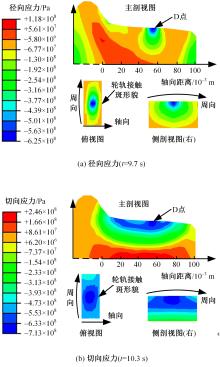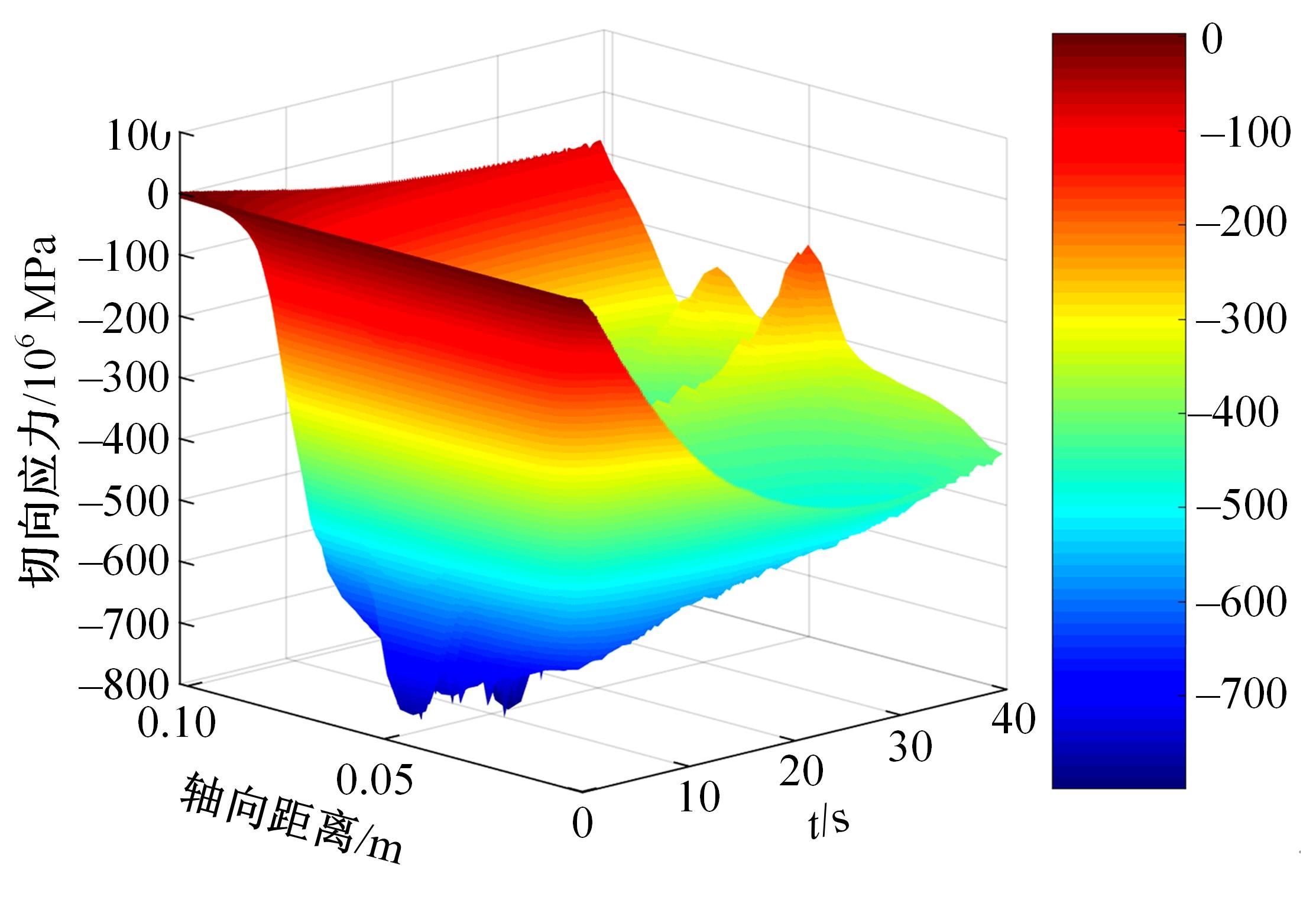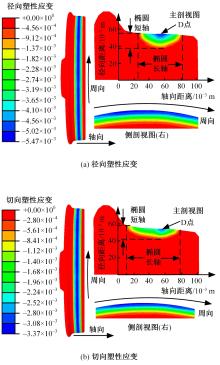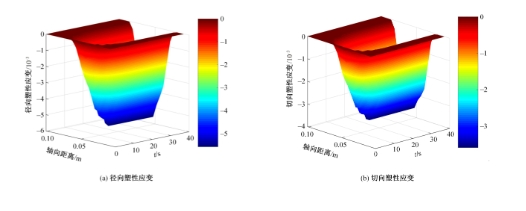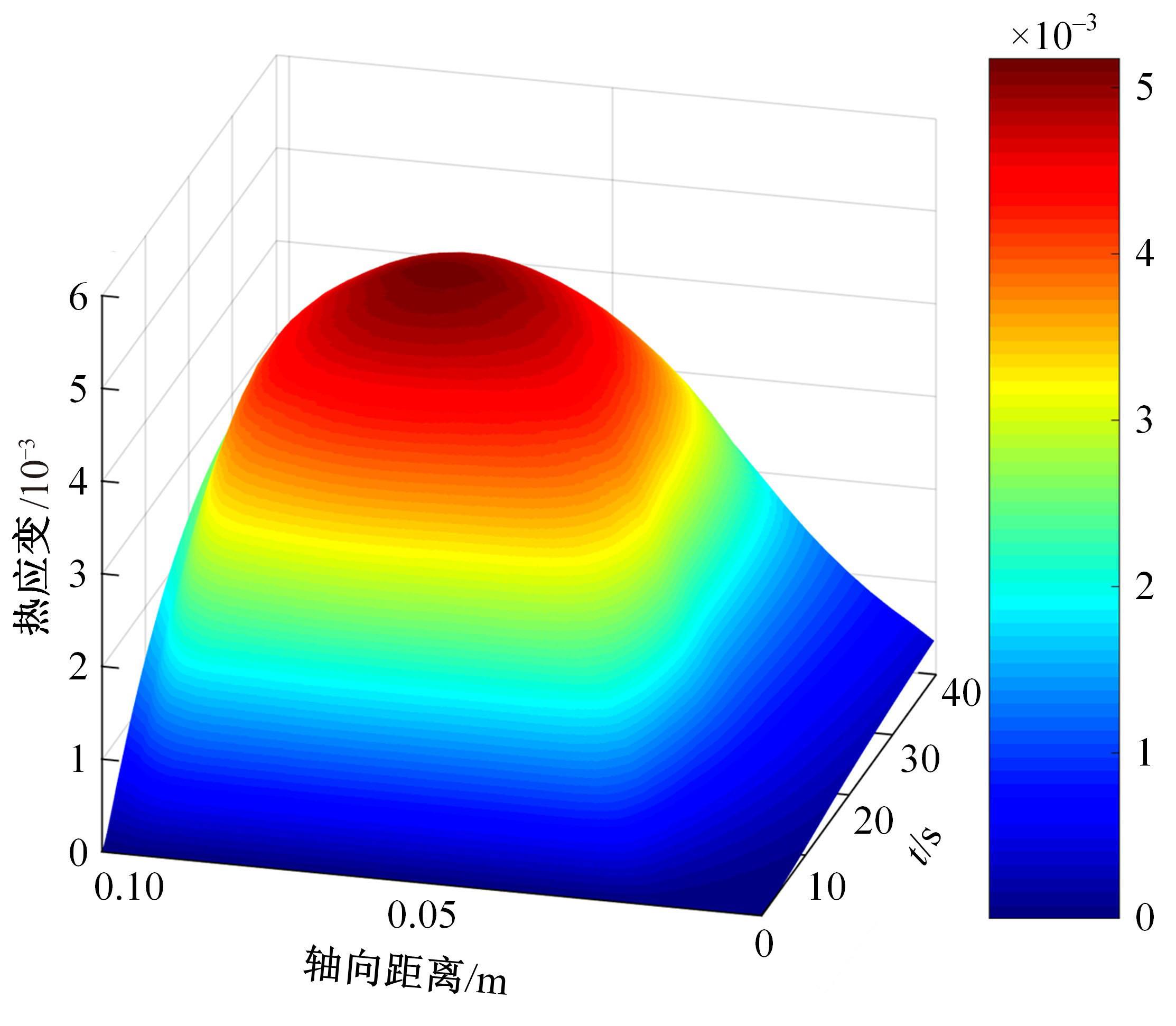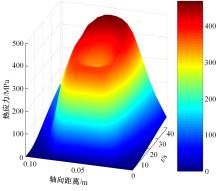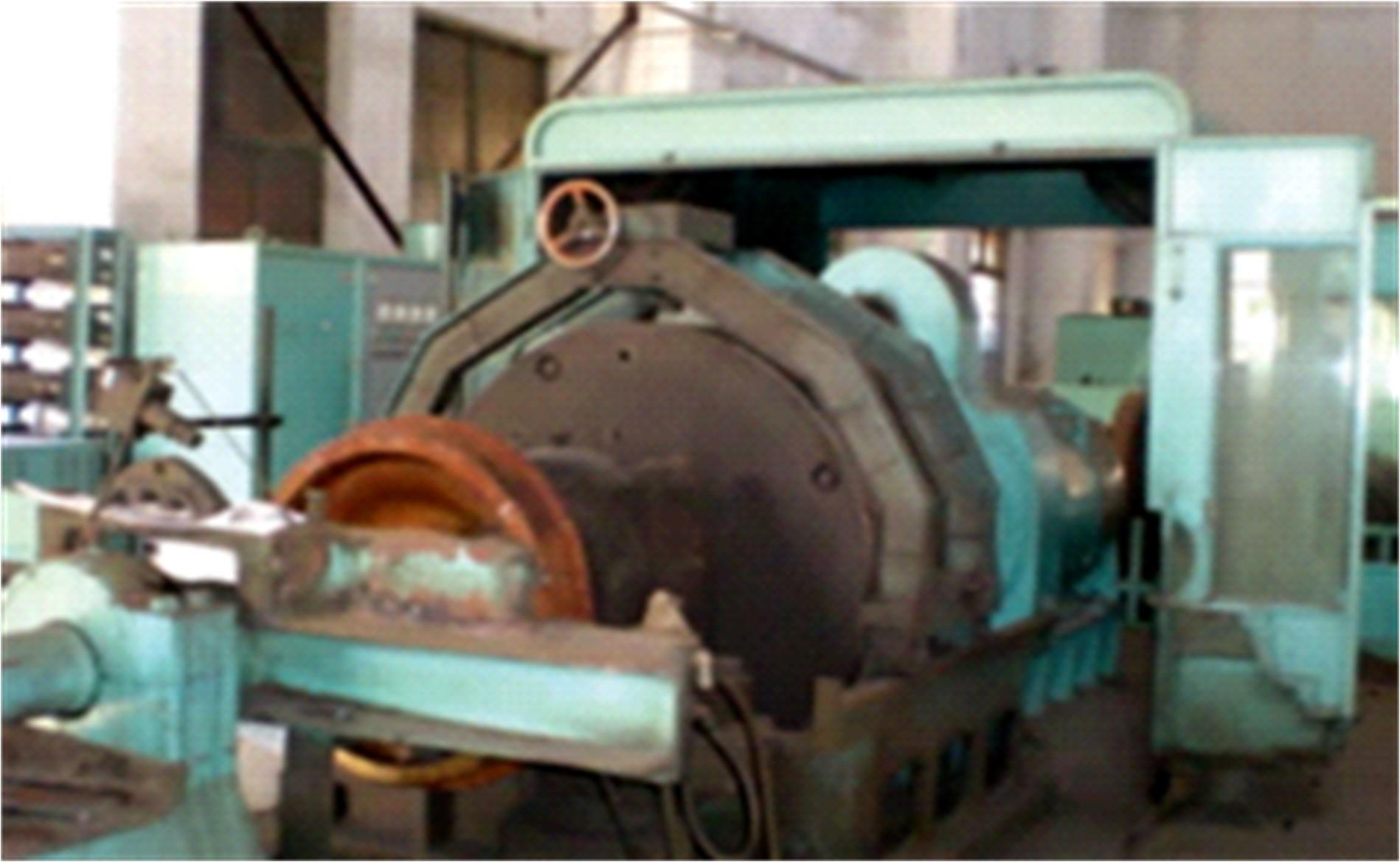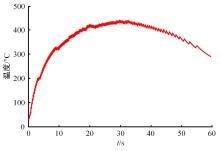Journal of Jilin University(Engineering and Technology Edition) ›› 2023, Vol. 53 ›› Issue (10): 2773-2784.doi: 10.13229/j.cnki.jdxbgxb.20211324
Previous Articles Next Articles
Temperature field and stress-strain distribution of tread during train braking
Jian-feng SONG1( ),Xin-lei HUANG1,Shuai YI2,Zhen-xi YANG3,Yong-gang DONG1(
),Xin-lei HUANG1,Shuai YI2,Zhen-xi YANG3,Yong-gang DONG1( ),Shu-lin LI4
),Shu-lin LI4
- 1.School of Mechanical Engineering,Yanshan University,Qinhuangdao 066044,China
2.Harvest Machinery Research Institute,Weichai Revo Heavy Industry Co. ,Ltd. ,Weifang 261200,China
3.School of Materials Science and Engineering,Yanshan University,Qinhuangdao 066044,China
4.Taiyuan Heavy Industry Rail Transit Equipment Co. ,Ltd. ,Taiyuan 030022,China
CLC Number:
- U211.5
| 1 | Kato T, Fujimura T, Yamamoto Y, et al. Effect of wheel size and tread braking on subsurface crack initiation in heavy haul car wheel[J]. Procedia Structural Integrity, 2019, 19(7): 238-248. |
| 2 | Naeimi M, Li S G, Li Z L, et al. Thermomechanical analysis of the wheel-rail contact using a coupled modelling procedure[J]. Tribology International, 2018, 11(7): 250-260. |
| 3 | Akama M, Kimata T. Numerical simulation model for the competition between short crack propagation and wear in the wheel tread[J]. Wear, 2020, 20(5): 448-449. |
| 4 | Mazzu A, Ghidini A, Provezza L, et al. Study of the damage induced by thermomechanical load in ER7 tread braked railway wheels[J]. Procedia Structural Integrity, 2019, 25(6): 170-182. |
| 5 | 张金煜, 虞大联, 林鹏. 基于旋转热源法和均布热源法的列车踏面制动温度场分析[J]. 机械工程学报, 2018, 54(6): 94-100. |
| Zhang Jin-yu, Yu Da-lian, Lin Peng. Analysis of temperature field of train tread braking based on rotating heat source method and uniformly distributed heat source method[J]. Journal of Mechanical Engineering, 2018, 54(6): 94-100. | |
| 6 | 毛保华, 龚超奇, 张桐, 等. 长大坡道货运列车周期性制动下车轮温升分析[J]. 铁道科学与工程学报, 2020, 17(4): 981-987. |
| Mao Bao-hua, Gong Chao-qi, Zhang Tong, et al. Analysis of wheel temperature rise of freight trains on long ramp under periodic braking[J]. Journal of Railway Science and Engineering, 2020, 17(4): 981-987. | |
| 7 | 张野, 马晓杰, 朱绘丽. 基于ANSYS的车轮踏面紧急制动热分析[J]. 铁道机车车辆, 2020, 40(3): 122-130. |
| Zhang Ye, Ma Xiao-jie, Zhu Hui-li. Thermal analysis of emergency braking of wheel tread based on ANSYS[J]. Railway Locomotive & Car, 2020, 40(3): 122-130. | |
| 8 | Kazuyuki H, Katsuyoshi I, Fumiko M. Temperature-dependent wear of tread-braked railway wheels[J]. Wear, 2020, 28(6): 1-9. |
| 9 | Walia M S, Esmaeili A, Vernersson T, et al. Thermomechanical capacity of wheel treads at stop braking: a parametric study[J]. International Journal of Fatigue, 2018, 11(3): 407-415. |
| 10 | 陈帅, 吴磊, 张合吉, 等. 踏面制动温升对重载铁路车轮磨耗的影响[J]. 机械工程学报, 2017, 53(2): 92-97. |
| Chen Shuai, Wu Lei, Zhang He-ji, et al. Influence of temperature rising of tread braking on wheel wear for heavy haul freight car[J]. Journal of Mechanical Engineering, 2017, 53(2): 92-97. | |
| 11 | 陈帅, 吴磊, 付青云, 等. 基于间隙热源法的车轮踏面制动摩擦温升研究[J]. 润滑与密封, 2017, 42(5): 30-35. |
| Chen Shuai, Wu Lei, Fu Qing-yun, et al. Research on wheel temperature rising due to tread braking based on intermittent heat source method[J]. Lubrication Engineering, 2017, 42(5): 30-35. | |
| 12 | 樊译璘. 重载铁路轮轨塑性匹配有限元分析[D]. 成都: 西南交通大学力学与工程学院, 2019. |
| Fan Yi-lin. Finite element analysis of wheel/rail plastic matching in heavy haul railway[D]. Chengdu: School of Mechanical and Engineering, Southwest Jiaotong University, 2019. | |
| 13 | 卢立丽. 货车车轮踏面制动热损伤研究[D]. 北京: 北京交通大学机械与电子控制工程学院, 2007. |
| Lu Li-li. Research on tread brake heat injury of freight wheel[D]. Beijing: School of Mechanical and Electronic Control Engineering, Beijing Jiaotong University, 2007. | |
| 14 | 樊译璘, 阚前华, 康国政, 等. 热处理U71Mn钢轨钢的棘轮行为及其本构模型[J]. 机械工程材料, 2019, 43(11): 62-72. |
| Fan Yi-lin, Kan Qian-hua, Kang Guo-zheng, et al. Ratcheting behavior and constitutive model of heat-treated U71Mn rail steel[J]. Material For Mechanical Engineering, 2019, 43(11): 62-72. | |
| 15 | 雷国军. 重载列车车轮表面对流传热特性的数值研究[D]. 兰州: 兰州交通大学车辆工程学院, 2020. |
| Lei Guo-jun. Numerical study on converctive heat transfer characteristics on the wheel surface of heavy-duty train[D]. Lanzhou: School of Vehicle Engineering, Lanzhou Jiaotong University, 2020. | |
| 16 | Chen Shuai, Zhao Guo-tang, Wang Heng-yu, et al. Study of wheel wear influenced by tread temperature rising during tread braking[J]. Wear, 2019(20): 1-10. |
| 17 | 李辉平, 贺连芳, 赵国群, 等. 硼钢B1500HS界面传热系数与压力关系的研究[J]. 机械工程学报, 2013, 49(16): 78-82. |
| Li Hui-ping, He Lian-fang, Zhao Guo-qun, et al. Research on the surface heat transfer coefficient depending on surface pressure of boron steel B1500HS[J]. Journal of Mechanical Engineering, 2013, 49(16): 78-82. | |
| 18 | 包辰铭. 重载列车踏面制动车轮温度场分析及制动故障诊断研究[D]. 北京: 北京交通大学机械与电子控制工程学院, 2020. |
| Bao Chen-ming. Temperature field analysis of brake wheels on heavy-dutty train treads abd research on brake fault diagnosis[D]. Beijing: School of Mechanical and Electronic Control Engineering, Beijing Jiaotong University, 2020. | |
| 19 | 肖绯雄,陈旭. 恶劣工况下货车高摩合成闸瓦磨损分析[J]. 北京交通大学学报, 2014, 38(4): 20-25. |
| Xiao Fei-xiong, Chen Xu. Wear analysis of the synthetic brake shoe with high friction of the freight train under harsh conditions[J]. Journal of Beijing Jiaotong University, 2014, 38(4): 20-25. | |
| 20 | 王京波, 习年生, 常崇义, 等. 重载货车车轮制动热负荷的试验深化研究[R]. 北京: 中国铁道科学研究院, 2012. |
| [1] | Ya-bing CHENG,Ze-yu YANG,Yan LI,Li-chi AN,Ze-hui XU,Peng-yu CAO,Lu-xiang CHEN. Vibration and noise characteristics base on timing silent chain system of hybrid electric vehicle [J]. Journal of Jilin University(Engineering and Technology Edition), 2023, 53(9): 2465-2473. |
| [2] | Jia-yi WANG,Xin-hui LIU,Zhan WANG,Jin-shi CHEN,Ya-fang HAN,Yu-qi WANG. Flow characteristics analysis of constant flow control valve based on AMESim [J]. Journal of Jilin University(Engineering and Technology Edition), 2023, 53(9): 2499-2507. |
| [3] | Ya-feng GONG,Shu-zheng WU,Hai-peng BI,Guo-jin TAN. Temperature field and frost heaving analysis of prefabricated box culvert based on field monitoring [J]. Journal of Jilin University(Engineering and Technology Edition), 2023, 53(8): 2321-2331. |
| [4] | Yan YANG,Yu-qing SHI,Xiao-rong ZHANG,Guan-wei LUO. Dynamic stability analysis of a amplitude⁃limited vibration system with multiple rigid constraints [J]. Journal of Jilin University(Engineering and Technology Edition), 2023, 53(2): 364-375. |
| [5] | Yang LIU. Calculation method of anti-backward-tilting buffer force of luffing jib tower crane [J]. Journal of Jilin University(Engineering and Technology Edition), 2023, 53(10): 2785-2794. |
| [6] | Xiao-hong LU,Jin-hui QIAO,Yu ZHOU,Chong MA,Guo-chuan SUI,Zhuo SUN. Research progress of temperature field in friction stir welding [J]. Journal of Jilin University(Engineering and Technology Edition), 2023, 53(1): 1-17. |
| [7] | Kui-yang WANG,Ren HE. Recognition method of braking intention based on support vector machine [J]. Journal of Jilin University(Engineering and Technology Edition), 2022, 52(8): 1770-1776. |
| [8] | Jun-cheng WANG,Lin-feng LYU,Jian-min LI,Jie-yu REN. Optimal sliding mode ABS control for electro⁃hydraulic composite braking of distributed driven electric vehicle [J]. Journal of Jilin University(Engineering and Technology Edition), 2022, 52(8): 1751-1758. |
| [9] | Qing-lin GUO,Qiang LIU,Chun-li WU,Li-li LI,Yi-ming LI,Fu-chun LIU. Local temperature field and healing level of crack in conductive asphalt and mixture [J]. Journal of Jilin University(Engineering and Technology Edition), 2022, 52(6): 1386-1393. |
| [10] | Yang LIU. Unloading impact simulation and test of luffing jib tower crane [J]. Journal of Jilin University(Engineering and Technology Edition), 2022, 52(6): 1292-1300. |
| [11] | Ya-bing CHENG,Lu-xiang CHEN,Ping-yu GE,Ze-yu YANG,Peng-yu CAO. Dynamic simulation analysis and wear failure of dual-phase timing bush chain [J]. Journal of Jilin University(Engineering and Technology Edition), 2022, 52(4): 781-788. |
| [12] | Yang ZHAO,Yang XIAO,Hao SUN,Wen-hao HUO,Song FENG,Yong LIAO. Numerical simulation of micro pitting damage characteristics of lubricated contact gears based on contour integral [J]. Journal of Jilin University(Engineering and Technology Edition), 2022, 52(4): 799-810. |
| [13] | Long ZHANG,Tian-peng XU,Chao-bing WANG,Jian-yu YI,Can-zhuang ZHEN. Gearbox fault diagnosis baed on convolutional gated recurrent network [J]. Journal of Jilin University(Engineering and Technology Edition), 2022, 52(2): 368-376. |
| [14] | Xing-tao LIU,Si-yuan LIN,Ji WU,Yao HE,Xin-tian LIU. Regenerative braking optimization strategy considering battery state of power [J]. Journal of Jilin University(Engineering and Technology Edition), 2022, 52(12): 2796-2805. |
| [15] | Wei ZHENG,Jian-jun SUN,Chen-bo MA,Qiu-ping YU,Yu-yan ZHANG,Tao NIU. Research status and prospect of automobile wheel hub machining fixture [J]. Journal of Jilin University(Engineering and Technology Edition), 2022, 52(1): 25-36. |
|
||


